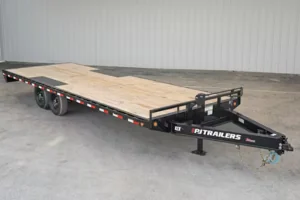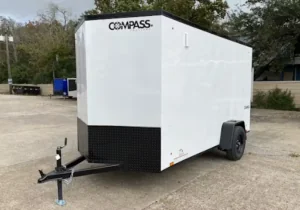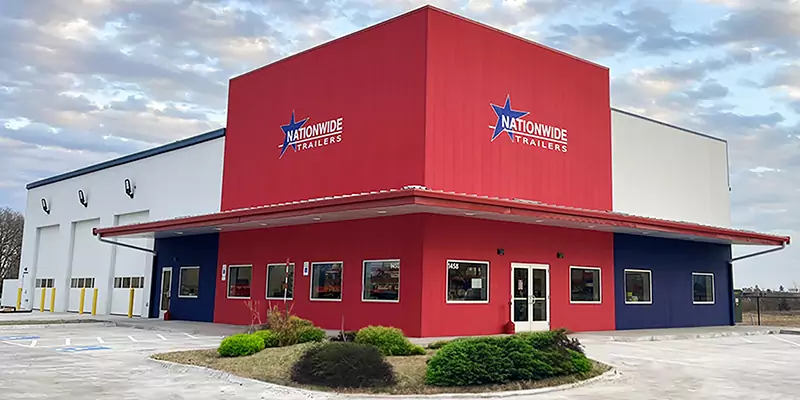
Every travel enthusiast knows the thrill of the open road, and for those who prefer the versatility of a flatbed trailer, the adventure is limitless. Whether you’re gearing up for a weekend in San Antonio, TX or a cross-country expedition, learning to properly load and secure your cargo is crucial. Not only does it ensure the safety of your precious items, but it also enhances your driving experience, allowing you to focus on the scenic routes ahead. This guide will walk you through everything you need to know about efficiently managing your cargo in a flatbed trailer.
Why Proper Cargo Loading Matters
In the hustle and bustle of preparing for a trip, it’s easy to overlook the importance of properly loading and securing your cargo. However, this step is essential for several reasons. Firstly, it minimizes the risk of damage to your belongings during transit. Secondly, correctly loaded cargo helps maintain the trailer’s balance, ensuring a safer, more stable ride. Lastly, following proper cargo management practices can prevent legal penalties, as improperly secured cargo can lead to fines and other consequences.
When cargo is not properly loaded, it can shift during travel, potentially causing accidents. For travel enthusiasts who treasure their gear, ensuring that everything arrives at the destination intact is paramount. Plus, there’s peace of mind knowing that your beloved bicycle or camping gear isn’t at risk of being damaged or lost along the way.
Understanding Weight Distribution and Legal Requirements
Before you start loading your flatbed trailer, it’s crucial to understand the basics of weight distribution and legal requirements. Proper weight distribution involves placing heavier items at the center of the trailer, near the axle, to maintain a low center of gravity. This setup prevents swaying and ensures easier handling of the trailer.
Legal requirements vary by region, so it’s essential to be familiar with the regulations in your area, such as those in San Antonio, TX. These laws govern how much weight your trailer can carry and how it should be secured. Ensuring compliance not only avoids fines but also promotes safe travel for everyone on the road.
Consider the weight limits of your trailer as well. Overloading can lead to mechanical failures and reduce the lifespan of your vehicle. By adhering to the recommended weight capacities, you ensure a smoother and more reliable trip.
Best Practices for Securing Common Cargo Types
Now that you’re familiar with weight distribution, let’s explore how to secure various common cargo types effectively. Each type of cargo requires specific attention to detail to ensure it remains stationary throughout your trip.
Securing ATVs and Motorbikes
ATVs and motorbikes are popular travel companions for adventure seekers, but they can be challenging to secure. Use heavy-duty straps and ratchet tie-downs to keep them in place. Ensure the wheels are tightly secured against the trailer floor and utilize wheel chocks if available. This method prevents any rolling or movement during transit.
Safeguarding Camping Gear
Camping gear, such as tents, sleeping bags, and cooking equipment, can be securely stored in waterproof containers. Stack the containers strategically, placing heavier items at the bottom. Use bungee cords or straps to prevent them from shifting while on the road. Keep frequently used items easily accessible for convenience.
Transporting Bicycles
For bicycles, consider using a specialized bike rack designed for trailers. If unavailable, lay the bike flat and secure it with straps, ensuring minimal movement. Protect the frame and components with padding to prevent scratches or damage during transport.
Tips for Loading Unusual or Oversized Cargo
Loading unusual or oversized cargo, like kayaks or motorcycles, poses additional challenges. These items often require unique solutions for safe transport.
Kayaks and Canoes
For kayaks and canoes, invest in a dedicated rack system that attaches to the trailer. Secure each vessel with padded straps to prevent scratching. Place the kayaks or canoes on their sides or upside down to minimize wind resistance and improve stability.
Motorcycles
Transporting motorcycles requires sturdy wheel chocks and multiple tie-down points. Ensure the motorcycle is balanced and upright before securing it with ratchet straps. Pay attention to the suspension and make sure the tie-downs do not compress it excessively.
Unique Cargo
For other unique cargo, like large furniture or construction materials, assess the weight and shape. Distribute the weight evenly across the trailer and secure the items with appropriate straps or nets. Consider using padding or blankets to prevent scratches or dents.
The Impact of Weather and Road Conditions
Weather and road conditions play a significant role in the safety of your cargo. Before heading out, check the weather forecast and plan accordingly. Rain, snow, and wind can increase the risk of cargo shifting or becoming damaged.
During adverse weather, reduce your speed and increase the distance between vehicles. This precaution allows more time to react to unexpected situations. Additionally, road conditions, such as gravel or potholes, can impact cargo stability. Drive cautiously and avoid sudden maneuvers to maintain control of the trailer.
Regular maintenance of your flatbed trailer is essential, especially in harsh weather conditions. Inspect the trailer’s tires, brakes, and lights before each trip to ensure they’re in optimal condition. Proper maintenance not only enhances safety but also prolongs the life of your trailer.
Conclusion and Next Steps
Loading and securing cargo in a flatbed trailer is a meticulous process that pays off in ensuring a safe and enjoyable journey. By understanding weight distribution, legal requirements, and best practices, you can confidently transport your gear to your favorite destinations.
Remember, careful preparation leads to a hassle-free adventure. Whether you’re securing your trusty kayak for a river expedition or transporting your motorcycle for a thrilling ride, these guidelines will help you succeed.
For additional resources and expert advice on securing your cargo, feel free to reach out to local experts in San Antonio, TX. They can provide personalized insights and recommendations tailored to your specific needs. Safe travels and happy adventures!




